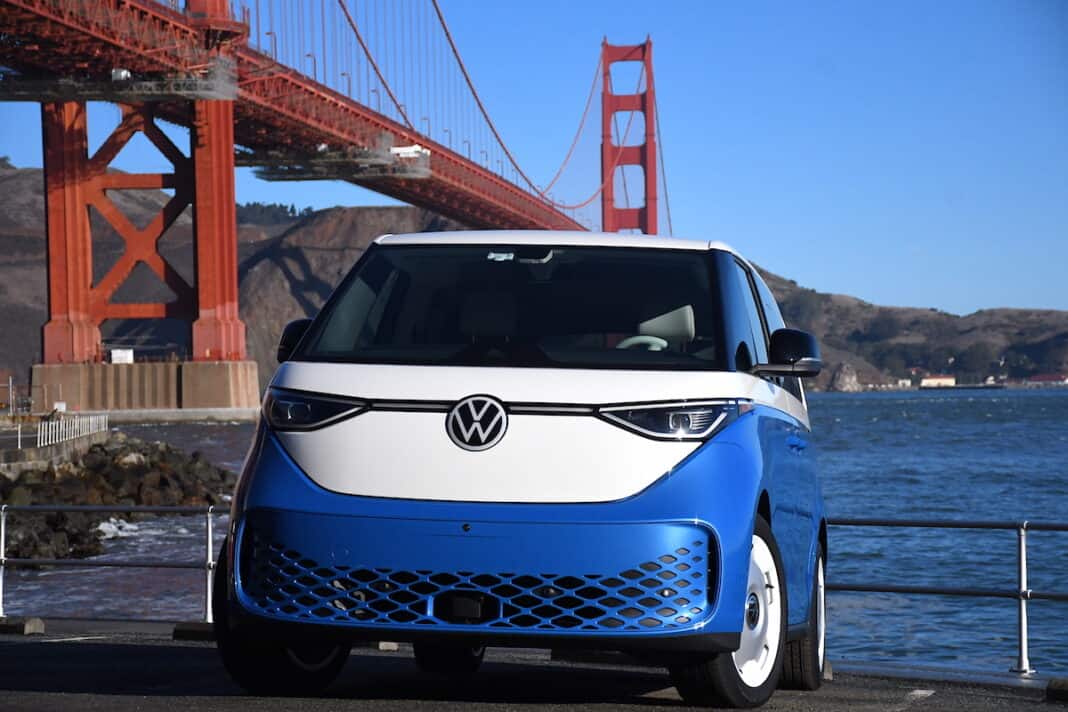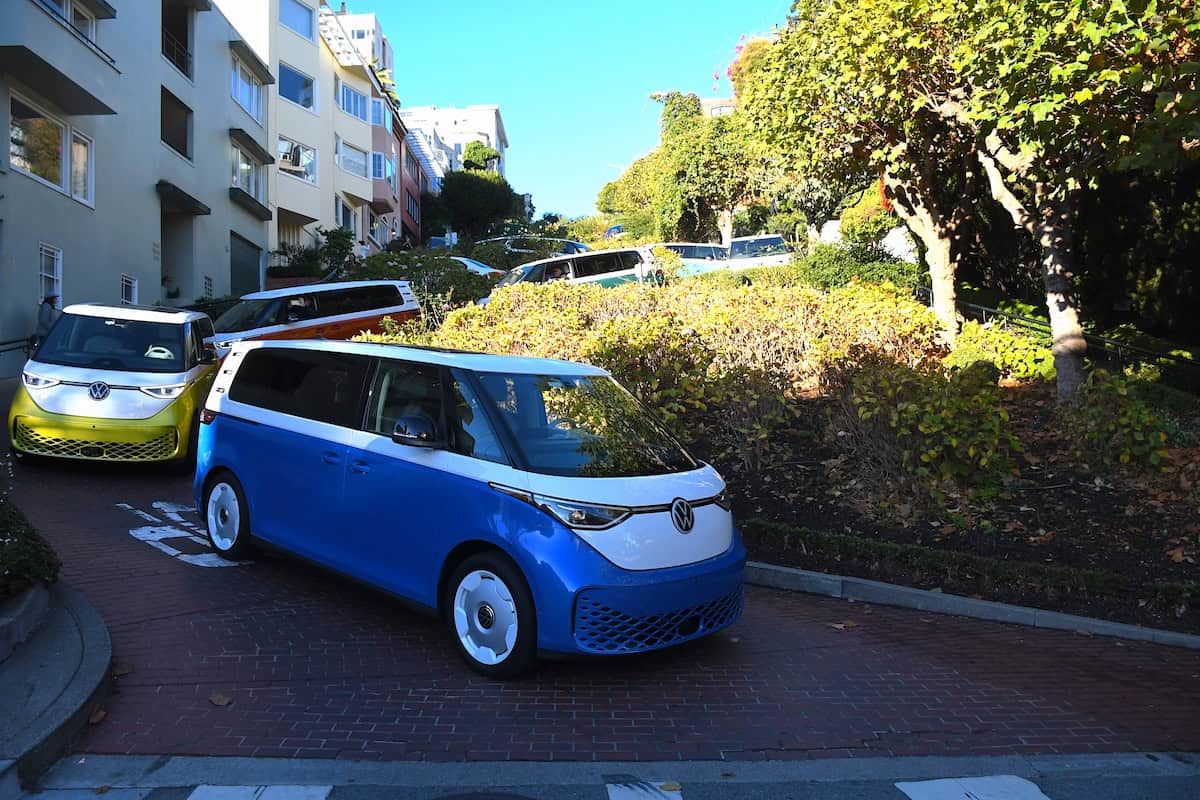San Francisco, CA – It’s rare to witness the launch of a new product that doesn’t fit into an existing segment. But that’s what I experienced at the launch of the 2025 Volkswagen ID. Buzz. This model is positioned as the first all-electric solution in the minivan category. The Chrysler Pacifica PHEV is closest to it, but the experience is different.
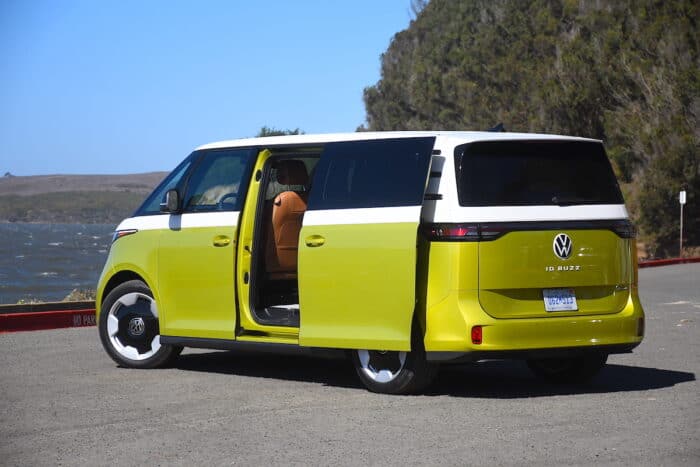
And the ID. Buzz is more than that. It’s the modern incarnation of a vehicle that moved a generation. If Volkswagen’s Microbus changed the lives of entrepreneurs and the delivery industry in the early ’50s, it became the lifestyle of a horde of identity-seeking young people in the US in the ’60s, even becoming a symbol of the counter-culture movement.
By bringing back the spirit of this model, Volkswagen wants to launch a revolution of its own, this time in the world of electric transport for families. While the proposed solution is appealing, it’s not for everyone, as we’re about to find out.
Performance and driving experience
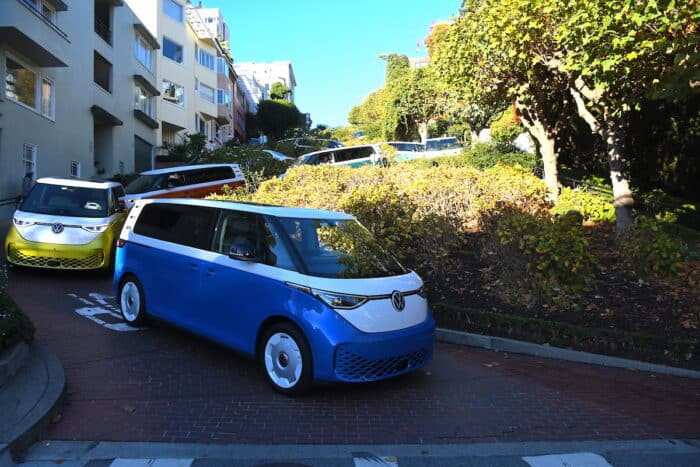
Built on Volkswagen’s MEB platform (also used for the ID.4 SUV), the electric Microbus benefits from a 91 kWh battery (86 kWh net). Well housed beneath the floor, it contributes to a low center of gravity, a blessing with a model that tips the scales at some 6,000 lbs.
The rear-wheel drive version delivers 282 hp. With the all-wheel drive variant, it’s 335. The torque is rated at 413 lb-ft.

As for range, it’s disappointing: 377 and 372 kilometres, respectfully — less in winter. For a product of this price, the threshold of respectability should be around 500-550 km. Volkswagen promises 26 minutes to raise the energy level from 10% to 80%, at a fast-charging station where the model’s capacity is 200 kW.
Note that towing capacity is either 3500 lbs or 2600 lbs, depending on whether you opt for a four-wheel or two-wheel drive model, in that order.
As for the driving experience, it’s a singular one. It’s fun because of the perched stance, some 15 cm higher than you’d find in a mid-size SUV. Visibility is excellent, thanks to the abundant windows that characterize this product.
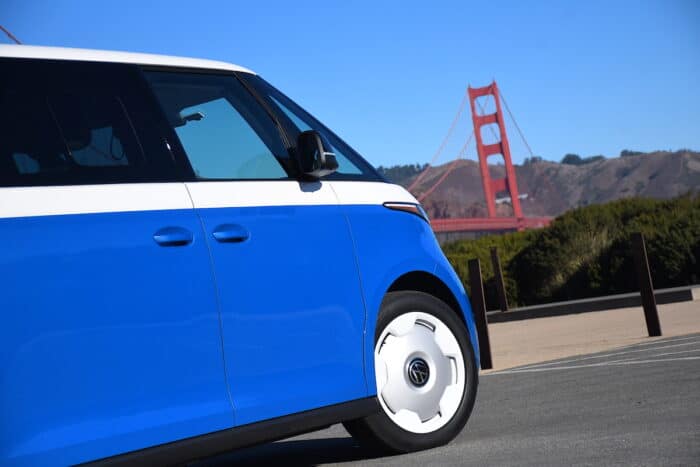
The four-wheel-drive version delivers just the right level of performance. Acceleration is brisk, vigorous and convincing. Braking is equally effective. In short, there’s nothing to complain about.
Soundproofing is also notable, although wind noise is unavoidable with the shape of this vehicle. Fortunately, the excellent Harman/Kardon audio system mitigates this. The smoothness of the ride is also much appreciated… when the road surface is well levelled. Otherwise, there’s a lot of bouncing around.
You feel in control behind the wheel, and the impression of driving a smaller model is sometimes present. In front of the driver is a 5.3-inch information screen, while the multimedia system’s 12.5-inch surface can be found at the center console.
Interior
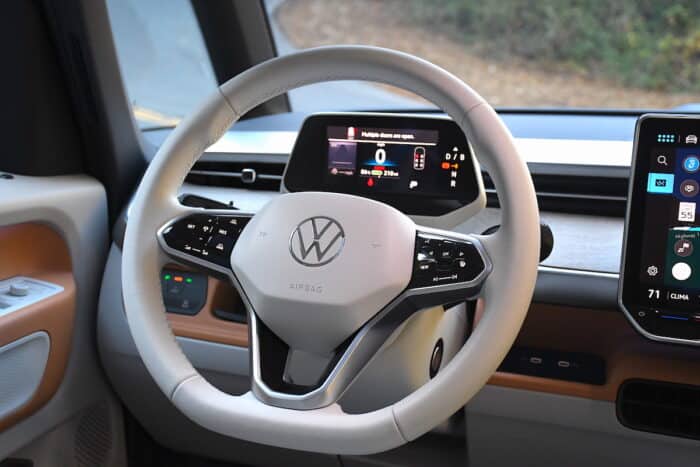
Nothing is more practical for a family than a minivan. The ID. Buzz adds to this argument with an interior design that maximizes space.
What you need to know is that the second-row seats are fixed. They slide 20 mm, then tilt forward for easy access to the third row. There, the seats can be removed, which is relatively easy, but consider that each unit weighs around fifty pounds.
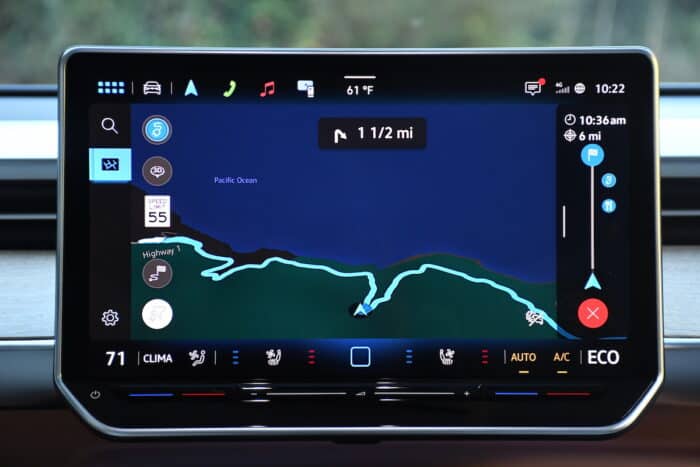
You can create a flat floor by reclining the second row with a rear-mounted tray at the back. Removing the tray maximizes cargo volume, which can reach 4120 litres.
And there’s plenty of storage space. From the bins that can be slid under the removable tray behind the third row, to the spaces in the doors, the openings in the dashboard, and that center console up front, which can be easily removed to be installed between the captain’s-style seats in the second row.

In Canada, for 2025, only one variant will be available: the First Edition. It will be available with rear-wheel drive or all-wheel drive. The problem is that the former has a seven-seat configuration (with a bench seat in the second row), while the all-wheel drive model, which the company predicts will be preferred by 90% of buyers, can only seat six so much for flexibility. We hope that Volkswagen will soon rectify this situation.
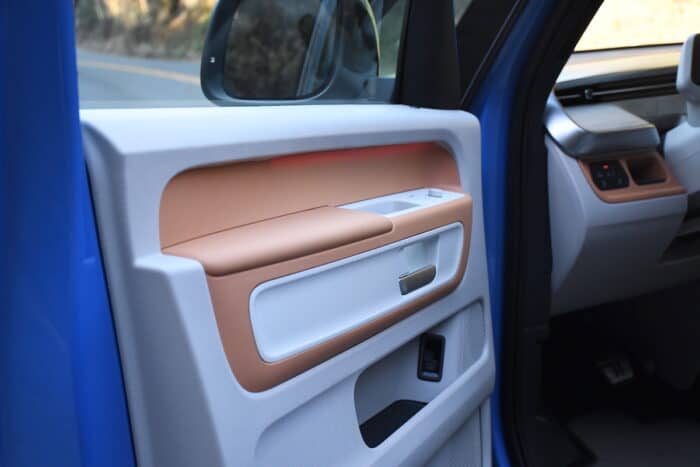
In the US, buyers can also opt for the Pro S (rear-wheel drive) or Pro S Plus (rear-wheel drive or 4Motion) models. Americans can get captain’s chairs with the rear-wheel drive Pro S Plus model.
The interior is available in three colours: Copper, Dune and Moonlight.
Styling
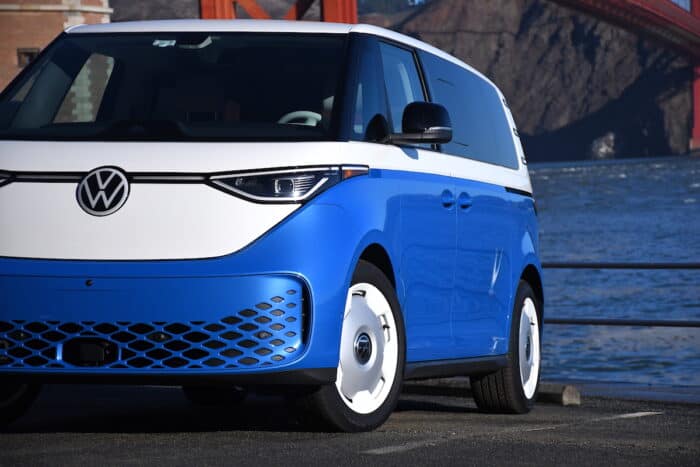
That’s the strength of this model. This modern interpretation of the Microbus of the 50s and 60s needs no introduction; its styling screams Volkswagen. And references to the past are plentiful, from the two-tone approach to the (fake) air intakes on the D-pillar to the V-shaped snout.
People’s reactions tell us everything. They turn around and give us the thumbs-up when they’re not just coming to talk about the model.

The company will surf on this for a while, that’s for sure. Then they’ll be caught up by a less amusing reality: the bill.
In Canada, five two-tone white-roof combinations will be available: orange, yellow, green, blue and gray, with three uniform colours: gray, black and dark blue. In the US, three additional two-tone combinations are available, including a red one with a grey roof. There are also three uniform options, including white, which is not offered in Canada. “It would have looked too much like a refrigerator,” said someone at Volkswagen.
Fair enough.
Takeaway
The ID. Buzz has everything to get buyers’ attention, starting with its style. The big question is who’s going to buy it. In the US, people have more options, and the offer starts at $59,995 US and closes at $69,995 US. The rear-wheel drive model in Canada is priced at $77,495 CA, and the all-wheel drive at $83,995 CA.
The ID. Buzz will sell, in the beginning, to individuals with the means to match their ambitions. And they’ll come from all over. With a price tag like this, the challenge will be to maintain the buzz.

